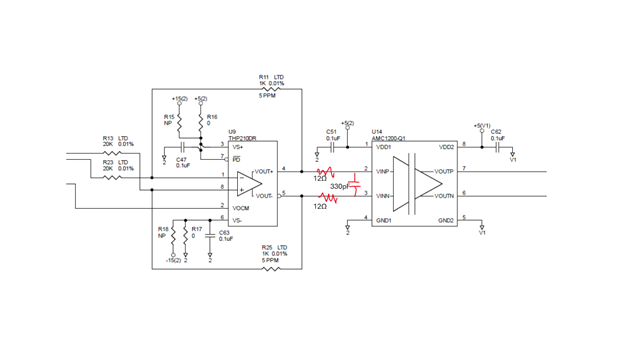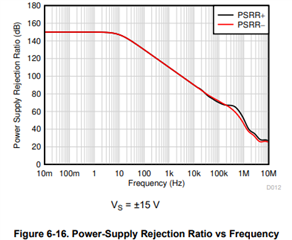Other Parts Discussed in Thread: AMC1200, AMC1300
Tool/software:
Hello All,
We have design where we are sending differential voltages from a DAC to a THP210 and also have an isolation amplifier (AMC1200) after the THP210 to isolate the noise from the digital side. At the output side of the AMC1200 the differential voltage from the AMC1200 is converted to single ended voltage which eventually serves as the programming voltage of a current source. As you can see from the following schematic that currently the THP210 outputs are directly connected to the AMC1200 inputs and we have ran into issues, such as, the AMC1200 providing more than expected voltages at its output, and when the differential voltage is at max the voltages at the output of the THP210 and AMC1200 are not steady, voltage values jumps around quite a bit. So, we are adding a filter network just before the AMC1200, the filter consists of two 12ohm resistors on each of the input lines and a 330pF capacitor between the two input pins. My question is- will the THP210 be stable with this new filter circuit added?
Your insights are much appreciated. Thank you.









